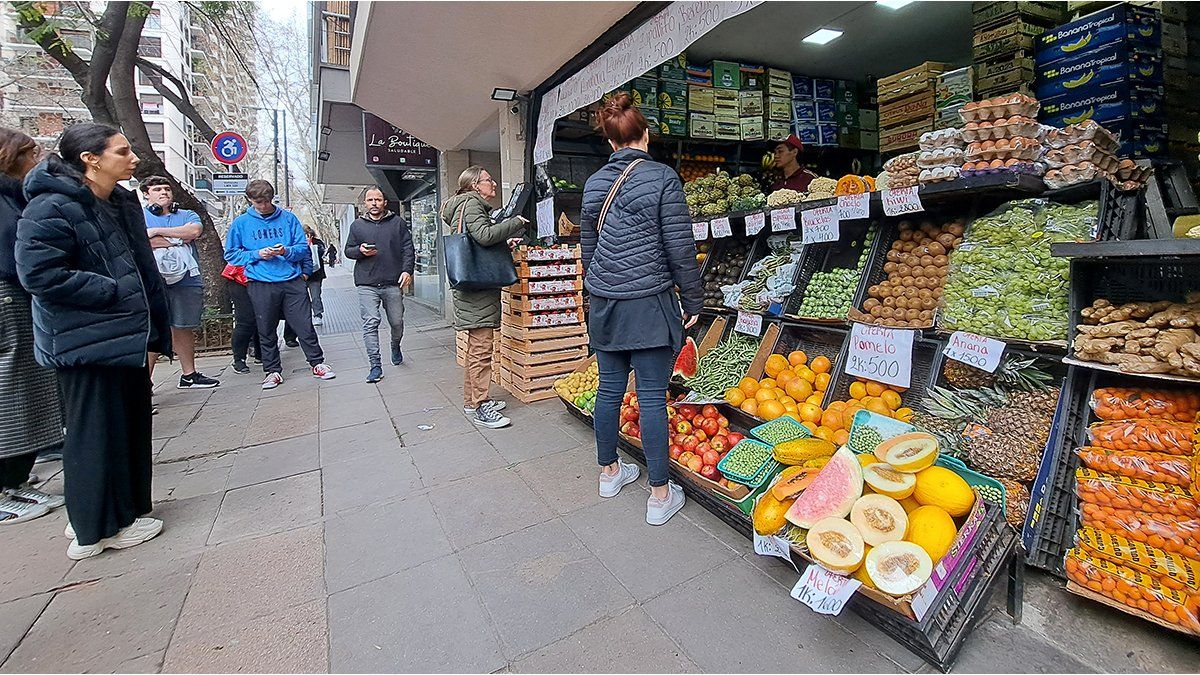The persistent inflation Food prices continue to rise sharply in various parts of the world. The most recent data, provided by the world Bankcorresponding to the months between May and August 2023reveal a persistence of that dynamic in multiple low- and middle-income countries.
Alarmingly, more than half of low income countries (52.6%), an even larger percentage of lower middle-income countries (86%) and a considerable number of upper middle-income countries (64%) have experienced inflation exceeding 5%. Many of these countries are being hit by double-digit inflation rates.
In real terms, food price inflation exceeded general inflation in 81% of the 162 countries for which data is availablenoted the World Bank in its latest update on food security.
Additionally, 73.2% of high-income countries are seeing a significant increase in food price inflation. This crisis mainly affects nations located in Africa, North America, Latin America, South Asia, Europe and Central Asia. In real terms, food price inflation exceeded general inflation in 81% of the 162 countries for which data is available, noted the world Bank in its latest update on food safety.
Inflation: the evolution of prices
Since the last update on July 27, the agricultural and grain price indices have seen a significant decline, falling by 6% and 10% respectively. This decline has also been reflected in the export price indices, which remained at the same level. The decline in the grain price index has been mainly driven by the downward performance of corn and wheat prices, declining by 13% and 24% respectively since then.
In year-on-year terms, These prices have fallen by an alarming 28% and 31% for corn and wheat, respectively.. However, the upward trend in rice prices since May persistsand now show a 31% increase. Compared to January 2021, corn prices are down 6%, wheat prices are down 12%, while rice prices are up a worrying 16%.
In the September 2023 issue of Agricultural Market Information System Market Monitoring Report (SIMA) highlights recent events that are influencing the markets of agricultural commodities. These include India’s rice export restrictions and the ongoing war in Ukraine, which have had a substantial impact on grain prices, especially wheat due to massive exports in the Black Sea before the end of an agreement.
Inflation: the impact of war and record cereal production
The termination of the Black Sea Grains Initiative and Russian attacks on Ukrainian export facilities have increased market volatility. Despite these challenges, the outlook for global production of soybeans and corn This year they are positive. However, concerns have been raised due to rising prices of agricultural inputs, especially those related to fossil fuel-based energy sourcessuch as mineral fertilizers, which has raised concerns about global food security.
In the upcoming 2023-24 season, the global cereal market is expected to show notable improvements, mainly due to record production of three basic grains: wheat, corn and rice. Wheat production is forecast to reach an unprecedented level, thanks to a combination of factors such as Argentina’s recovery from a severe drought that had affected its wheat production, production forecast near record high in Canada and sizable harvests anticipated in Chinathe European Union and India.
Similarly, Corn production is also expected to reach record levels in 2023-24, driven by anticipated increases in production in Argentina, China, the European Union and the United States. However, restrictions imposed by India on non-basmati rice exports have limited global supplies of this product and affected the overall market dynamics. Despite these challenges, global cereal supplies are projected to increase by about 60 million tonnes in 2023-24, an increase slightly above the long-term average annual growth.
Inflation: the impact of climate
The Food and Agriculture Organization of the United Nations (FAO) expressed on several occasions the various regional impacts of the El Niño phenomenon. In East Africa, El Niño-induced above-average rainfall could represent trade-offs, as it could help recovery from current drought conditions and stimulate Crop and livestock production also carry the risk of heavy rain, flooding and landslides, especially in areas such as eastern Ethiopia, Kenya, Somalia and southern Uganda..
In Asia and the Pacific, the effects of El Niño varies from one region to another and affects agriculture and food security in different ways. Drought-related losses are anticipated in crops of cereals, pulses and key cash crops, as well as threats to the aquaculture sector from saltwater intrusion in Southeast Asian countries. In addition, livestock mortality is expected due to rising temperatures and water shortages. Finally, In Latin America and the Caribbean, the impacts of El Niño include delays in plantingcrop losses and problems in livestock farming in countries such as Bolivia, Colombia, Ecuador, Peru and Venezuela, as well as in Central American nations.
After Russia’s invasion of Ukraine, there was a significant increase in trade-related policies implemented by several countries. The global food crisis has worsened in part due to the increase in food trade restrictions established by countries with the aim of increasing domestic supply and reducing prices.
Until September 11, 202319 countries had established 27 food export bans, and 7 had implemented 12 export restriction measures. Which results in additional challenges in the fight to guarantee food security at a global level and highlights the need to address these food security problems. collaborative and coordinated manner in the international community.
Source: Ambito




